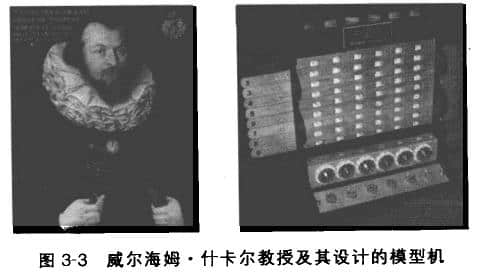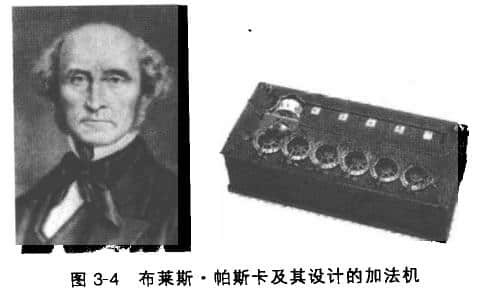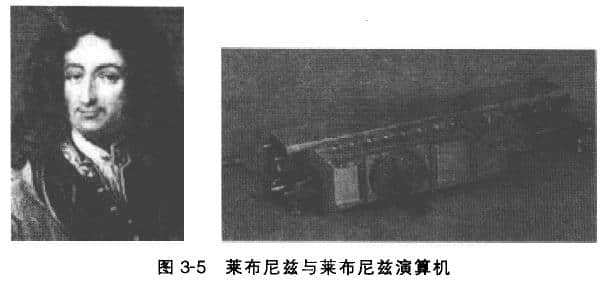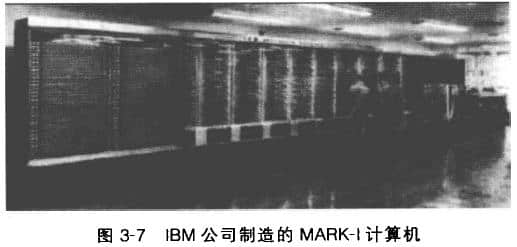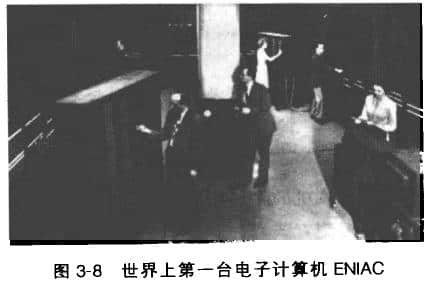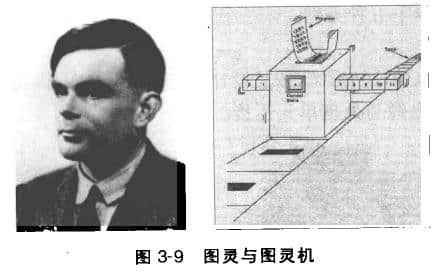Computer Development and Birth
Source: Shangpin China |
Type: website encyclopedia |
Time: June 16, 2014
The generation of computers comes from the demand for computing, and the development of computers comes from the unprecedented rise of computing demand. The modernization of communication technology, the emergence of the Internet and the "unification of the world" benefit from the rapid development of computers. They are all doing their best to achieve the common goal of information transmission, processing and sharing. In the final analysis, Marketing website construction The occurrence and development of information technology originate from computing and end up in computing.
The origin of computing tools can be traced back to the Spring and Autumn Period and the Warring States Period more than 2000 years ago. Arithmetic invented by ancient Chinese is the earliest computing tool in the world. As shown in Figure 3-1, it is placed in vertical and horizontal forms when computing. It represents any natural number according to the principle of alternating vertical and horizontal, and can be used for addition, subtraction, multiplication, division, square root and other algebraic calculations. When negative numbers appear, there are two kinds of bonus and black number, red number means positive number, and black number means negative number. This computing tool and method was unique in the world at that time. Arithmetic has made great contributions to human civilization. Zu Chongzhi, a famous mathematician in ancient China, calculated the value of pi between 3 1415926 and 3 1415927.
About six or seven hundred years ago, the Chinese invented a more convenient computing tool, the abacus, as shown in Figure 3-2. The abacus method is widely used in China's commercial activities. Because of its advanced technology and handy tools, it has been used so far. Many people believe that the abacus is the earliest digital computer.
In 1614, the Englishman Nipple invented logarithm. The slide rule invented according to the logarithmic principle can perform complex multiplication and division operations by simply pushing and pulling, and has become a common computing tool for engineers.
With the development of industrial technology, a large number of large-scale complex calculations are required, and traditional computing tools can not free people from heavy and mechanical computing work, so computing tools have been further developed with the increase of application needs.
In 1623, Professor Wilhelm Schickard of the University of Tubingen in Germany designed the first computing device model with a carry mechanism to perform four arithmetic operations, as shown in Figure 3-3. In 1642, French mathematician Blaise Pascal designed and manufactured a mechanical calculator for numerical calculation, which can perform addition and subtraction operations, as shown in Figure 3-4. It uses one gear to represent the number, and uses the gear meshing device to realize carry by turning the low gear for 10 turns and the high gear for one turn. This is the embryonic form of the handheld calculator. Although its calculation principle is simple, it conforms to human thinking habits, and its influence is also very long. To commemorate his contribution, in 1971, Professor Voss named a high-level programming language he invented Pascal.
The 17th to 18th century is a very important period for the development of human computing technology. Under the influence of Pascal's thought and work, Leibniz, a German philosopher and natural scientist, made important improvements to the mechanical calculator. In 1672, he proposed the scheme of realizing mechanical multiplication without continuous addition, and in 1673, he made the first universal mechanical calculator. This is a computer that can realize four arithmetic operations. The key component of the machine is the trapezoidal shaft, that is, the cylinder with different tooth lengths. The gear with variable number of teeth (as shown in Figure 3-5) was realized for the first time, which ensured the completion of multiplication and division. With the rapid growth of calculation workload, and the strong advocacy of Pascal and Leibniz, European countries in the 18th century attached great importance to the development of mechanical calculators.
Many kinds of mechanical calculators appeared in this period. The work of Pascal and Leibniz laid the theoretical foundation for the handheld calculator. However, whether it is Leibniz calculator or other mechanical calculators, they are fundamentally different from modern electronic computers, that is, these calculators can only complete simple four arithmetic operations and can not achieve program control. In the 19th century, the British mathematician Babbage proposed a differential model for the calculation needs of Yaowen and nautical meters, as shown in Figure 3-6. In the design of this model, he first considered the idea of program control, which was 133 years before the birth of modern computers. Babbage's machine consists of gear register, arithmetic unit and mechanism specially controlling operation sequence, which is very close to modern computer in structure. Due to financial and other reasons, this differential unit did not achieve final success. This is because Babbage's thought has gone beyond his era. It is really too difficult to make thousands of gears work accurately under the control of steam power.
However, Babbage, a computer pioneer, has greatly inspired people's thoughts, and the differential computer is also considered to be the ancestor of modern computers. Babbage's unfinished prototype is still on display in the British Museum in London, England.
On August 7, 1944, the MARK-I computer, funded by IBM and developed by American H. Aiken, was officially put into operation in Harvard University, as shown in Figure 3-7. It uses relays to replace gear and other mechanical parts, and is equipped with 150000 components and a total length of 800k. It can perform more than 200 operations per minute. The female mathematician G. Hopper compiled a calculation program for it and declared that the computer could solve differential equations. The advent of MARK-I computer not only realized Babbage's long cherished wish, but also represented the highest level of mechanical calculator and electric calculator since the advent of Pascal calculator. After the end of the Second World War, the US military began to vigorously develop new weapons. In the development of new weapons, the study of ballistic problems has to go through many complicated calculation processes. At this time, relying on previous computing tools is far from meeting the requirements, and a machine that can automatically and quickly complete the computing process is urgently needed. Based on this demand, in 1946, two young physicists, J. W. Mauchly and J. P. Eckert, presided over the development of the world's first electronic computer ENIAC (electronic digital integration computer) at the University of Pennsylvania, as shown in Figure 3-8 ENIAC uses more than 18000 tubes, covering an area of 170m2, with a total weight of 30t, and can perform 5000 addition operations per second.
The theoretical model of modern electronic computer is the Turing's Machine proposed by the mathematician Alan Mathison Turing in 1939, so he is called the father of computer theory. In memory of him, the highest honor award in the world's computer field is the ACM Turing Award.
Turing machine is an abstract machine (imaginary machine), as shown in Figure 3-9. The components of this device are: an infinite paper tape, a read/write head, a controller (the large box in Figure 3-9 has internal state), and a program to control this box. This device reads, writes and moves the paper tape according to the program command and its internal state. The paper tape is divided into small squares, each of which can be blank or a character. The Turing machine works like this: the read/write head reads the information of a square on the paper tape, looks up the program table according to its current internal state, and then obtains an output action, that is, write information on the paper tape or move the read/write head to the next square. The program will also tell it which internal state it will transfer to next time. The generation of Turing machine has laid the theoretical foundation of modern digital computers. According to the basic and concise concept of Turing machine, we can also see what the computable limit is.
Von Neumann is a famous American Hungarian mathematician. He was born in Budapest, Hungary, on December 3, 1903, into a Jewish family. He once made suggestions on the design of ENIAC. In March 1945, he drafted the first draft of EDVAC (electronic discrete variable automatic computer, as shown in Figure 3-10) design report to address the shortcomings of ENIAC. In this scheme, von Neumann made the following two major improvements: the number system inside the machine was changed from the original decimal system to binary system; Control the operation process of computer by means of stored program. Von Neumann's work has had a profound impact on the development of modern computers, and has determined the basic architecture of modern computers. The storage program control mode proposed by him is to program the instructions to be executed and the data to be processed in a certain order and store them in the computer for automatic execution. This design idea has continued to this day. Therefore, people call Von Neumann the father of modern computers, and computers with Von Neumann architecture are called Von Neumann machines.
Source Statement: This article is original or edited by Shangpin China's editors. If it needs to be reproduced, please indicate that it is from Shangpin China. The above contents (including pictures and words) are from the Internet. If there is any infringement, please contact us in time (010-60259772).

